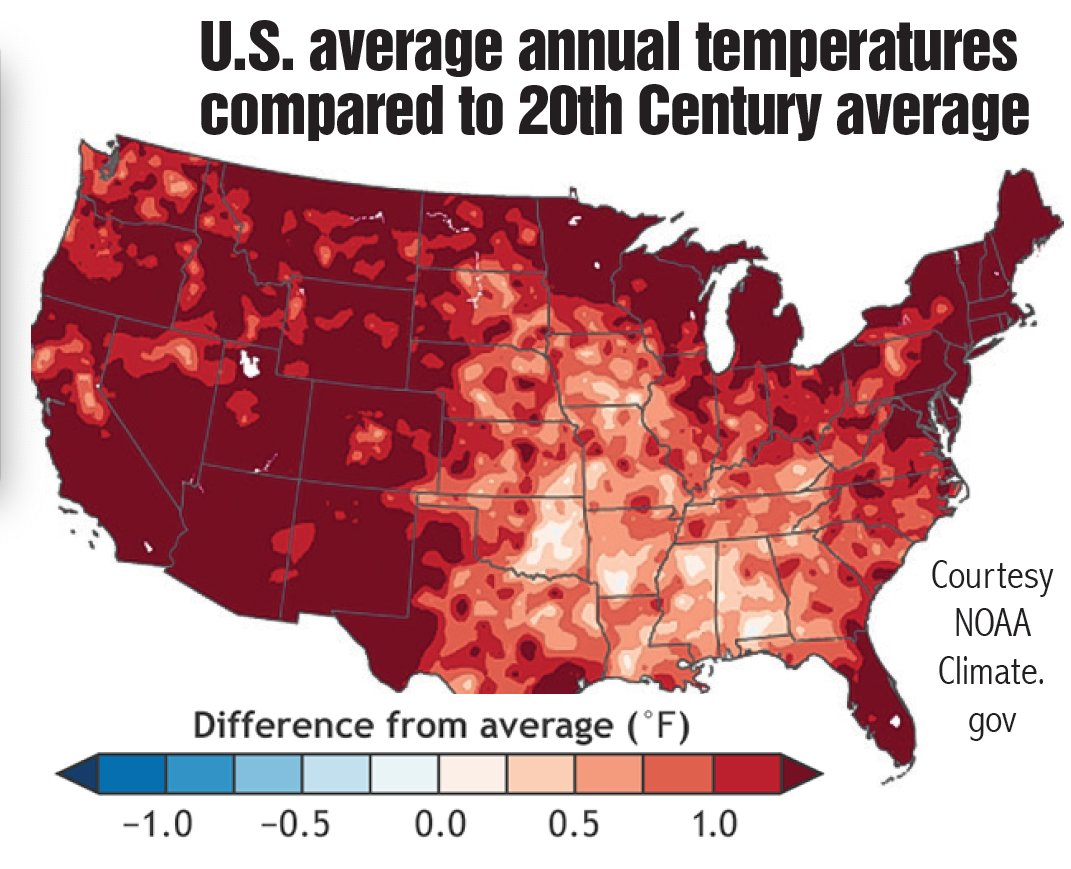Support the Timberjay by making a donation.
North Country took a time-out on warming trend
NOAA released its latest climate “normals” and northern Minnesota bucks the pattern found elsewhere
REGIONAL— Northern Minnesota largely defied the global trend toward warmer temperatures over the past decade, based on the latest update to climate “normals,” released last week by …
This item is available in full to subscribers.
Attention subscribers
To continue reading, you will need to either log in to your subscriber account, or purchase a new subscription.
If you are a current print subscriber, you can set up a free website account and connect your subscription to it by clicking here.
If you are a digital subscriber with an active, online-only subscription then you already have an account here. Just reset your password if you've not yet logged in to your account on this new site.
Otherwise, click here to view your options for subscribing.
Please log in to continue |
North Country took a time-out on warming trend
NOAA released its latest climate “normals” and northern Minnesota bucks the pattern found elsewhere
REGIONAL— Northern Minnesota largely defied the global trend toward warmer temperatures over the past decade, based on the latest update to climate “normals,” released last week by the National Oceanic and Atmospheric Administration, or NOAA.
The climate normals, or averages, are updated every decade to reflect temperatures and precipitation from the most recent thirty-year period. The new average climate data now reflects weather records from the period 1991-2020.
While the new data reflects a continuation of the longstanding trend of warming temperatures across virtually all of the U.S., that trend took a pause in parts of the north-central U.S, particularly northern Minnesota and much of North and South Dakota, where the new normals reflect a slight cooling at many, but not all, reporting stations.
Longstanding weather stations, like those at the Hibbing and International Falls airports, reflect the changes and the variability in the temperature change in various months of the year. In January, for example, the new monthly average temperature in International Falls increased slightly, from 4.4 degrees F to 5.0 F. By contrast, recent cold Februarys pushed the monthly average temperature down from 10.3 F to 9.5 F. Decembers warmed considerably in the update, increasing from a monthly average of 9.7 degrees F to 11.8. July and August both saw average temperatures cool slightly in the latest update.
At Hibbing, average temperatures cooled in both January and February. Average February temperatures fell most dramatically, from 12 degrees F to 10.5 F in the latest update. December temperatures, meanwhile, increased from 11.3 F to 12.3, following the same trend observed at the Falls. Summer temperatures also cooled slightly.
Across Minnesota overall, the latest climate data shows a continued warming, although the difference was only about a tenth of a degree, according to Ken Blumenfeld, a climatologist with the Department of Natural Resources.
That was significantly less than the warming reflected the last time the climate normals were adjusted, back in 2010. “We’re still getting a little bit warmer, but it was not as big a spike as last time,” said Blumenfeld.
The vagaries of the weather played a role in the unexpected cooling in parts of the region. Blumenfeld noted that the 1980s included three or four exceptionally mild winters, and that those milder temperatures were dropped from the latest climate calculations, which helped to lower the new 30-year average. At the same time, Blumenfeld said, the period 2011-2020 included wide swings in winter conditions, including several years with relatively harsh conditions, in some cases exceptionally harsh.
Even with the slight lowering of climate normals in northern Minnesota in this latest update, Blumenfeld said the state’s trend toward warmer temperatures does not appear to have abated. “We really made a big jump in warming in the last 3-4 decades, which has changed the way we think of winter. From that change, we have ups and downs, but nothing that has brought us back to where we used to be,” he said.
Meanwhile, precipitation showed variability as well. The average annual precipitation in Hibbing declined from 25.27 inches in the prior period to 24.76 inches today. It was the opposite in International Falls, where annual precipitation increased from 24.94 inches to 25.37.
Overall, Minnesota grew considerably wetter, notes Blumenfeld, although that trend was most pronounced in the southern part of the state.






